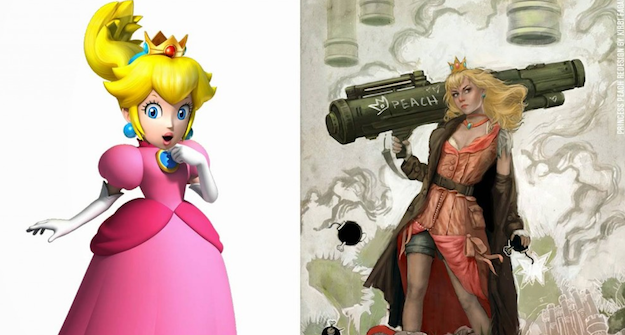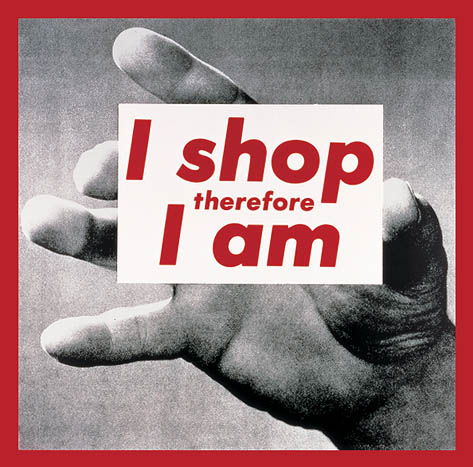I’ve been doing a lot of research in the past months into representation in video games, particularly gender representation, with a few forays into racial representation. As a woman who prefers to play as a woman whenever possible, this is an issue close to my heart, and it’s one that I think speaks to the vast untapped potential in the gaming industry. While I’ve talked about a few better examples of diverse games, like State of Decay, typically these discussions revolve around a lack of options, particularly for female characters.
We’ve been told frequently that this lack isn’t due necessarily to reflections on the industry (though if this is the media, wouldn’t similar pictures of development teams be interesting), but instead to technological limitations. Call of Duty was apparently unable to insert female characters until recently due to engine limitations (something some have questioned); representatives of Ubisoft famously indicated women were simply too difficult to program.
But when developers tell us that they can’t make female characters due to technical issues and/or difficulties, that in and of itself is a problem of an industry designed for and by white males. The tendency to reuse assets, designs, and engines leads to cycles of poorly designed worlds that reflect few options and often less reality than they should. The long history of leaving out options for players—particularly in games with a character creation engine—needs to end, whether those options limit choices based on race, gender, or other factors. A choice to play as a male character is not a choice at all, particularly when it comes to something as intimate as an avatar in a game. Numerous studies (Trepte, Ogletree, etc.) have indicated women are more likely to make or choose female characters as protagonists when the options are presented, but few if any studies (that I have encountered at least; please clue me in if they’re out there!) have explored whether or not women would be more likely to play games, particularly more intensive console and/or PC games, if character options were wider. This brings us again to the idea of potential in the games industry; could gaming, already an industry worth billions, grow to even greater proportions if it became a more inclusive environment?
In order to get a good idea of where we’ve been, I’ve compiled a list of the top-selling games from the Xbox 360, since the transition to the new generation allows an almost-complete data set for that console. Of course, games are still being released and this order may shift, but from January of this year, when I first looked, to today, this list had not changed at all. Of these fifteen games, only two featured options for female protagonists and no game had a set female protagonist—when there was no option, the player was cast in a male role for story mode. Half the games did offer an option for female characters in multiplayer or online modes, but considering the harassment many women face in online gaming if they speak up, these options are sometimes limited or avoided altogether (unless women simply choose to ignore that option to avoid harassment).
| Title | Female Option? |
| Kinect Adventures! | Yes |
| Grand Theft Auto V | Multiplayer/Online |
| Call of Duty: Modern Warfare 3 | None |
| Call of Duty: Black Ops | None |
| Call of Duty: Modern Warfare 2 | None |
| Call of Duty: Black Ops II | None |
| Halo 3 | Multiplayer/Online |
| Grand Theft Auto IV | Multiplayer/Online |
| Halo: Reach | Yes* |
| Call of Duty: Ghosts | Multiplayer/Online |
| Halo 4 | Multiplayer/Online |
| Call of Duty 4: Modern Warfare | None |
| Elder Scrolls V: Skyrim | Yes |
| Battlefield 3 | None |
| Call of Duty: World at War | None |
*data from VG Chartz
That is astonishingly poor representation amongst the top-selling games, and I can’t help but wonder if there’s a link between the number of women who will default to listing Skyrim as a favorite game and the fact that it is the only top-selling game, besides Kinect Adventures, packaged with the Kinect, that offered a chance at a female protagonist. Is it just an attraction to role-playing games, or is the link dependent on the fact that role-playing games often offer female options? As we see more options for female characters in primary roles, will we see expansion there as well? Call of Duty: Black Ops III, for instance, is offering a fully customizable female option for the protagonist, a choice that intrigues me. I haven’t played a CoD game since the early days of the series, but I’ll certainly pick this one up if only to try it. Am I alone in that?
*[Note: Commenter Tim dropped in to talk about Halo: Reach’s female options and I’ve corrected to include that. My apologies; didn’t play Reach much, and it’s been a long time! Halo’s been a spotty series for female inclusion, with steps forward and back despite a richer representation in secondary and background characters, though Destiny seems like a different animal in those terms.”
 Gender options are not the only thing lost when looking at character creation engines; too many games, historically and stretching into the contemporary, have neglected to include many options for characters beyond whiteness. There have been some extreme examples of this, outside of the above data set, as with the Wii’s original Carnival Games (you could create white characters, but only white characters, despite the presence of black characters in the game). Final Fantasy XI, the series’ first MMO, only allowed white humans. In related issues, even when darker skin tones are included, a common complaint is that dark-skinned characters look like just that: the same as white characters, in terms of features, just with a different color palette. Fallout 3 allowed dark-skinned characters, but they tended to have the sort of greenish cast common with low-quality cameras and video, though to be fair, so did a lot of things in that game. Destiny is a game that did this well, in my opinion, or at least better than most. But discussions of racial inclusion are largely outside the scope of this piece, as it’s a much bigger issue, one that extends far beyond simple black/white breakdowns of race, skin tones, and features.
Gender options are not the only thing lost when looking at character creation engines; too many games, historically and stretching into the contemporary, have neglected to include many options for characters beyond whiteness. There have been some extreme examples of this, outside of the above data set, as with the Wii’s original Carnival Games (you could create white characters, but only white characters, despite the presence of black characters in the game). Final Fantasy XI, the series’ first MMO, only allowed white humans. In related issues, even when darker skin tones are included, a common complaint is that dark-skinned characters look like just that: the same as white characters, in terms of features, just with a different color palette. Fallout 3 allowed dark-skinned characters, but they tended to have the sort of greenish cast common with low-quality cameras and video, though to be fair, so did a lot of things in that game. Destiny is a game that did this well, in my opinion, or at least better than most. But discussions of racial inclusion are largely outside the scope of this piece, as it’s a much bigger issue, one that extends far beyond simple black/white breakdowns of race, skin tones, and features.
Even though this data is looking backward at a console generation that’s ending, as we embark on new realms of gaming, it’s important to keep these top-selling games from the last generation in mind. I may explore other consoles in the future, for comparison’s sake, and just to see what we’re evolving from, as we track where we’re going.





3 thoughts on “Gender Representation in Top-Selling Xbox 360 Games and Beyond”
Good reminder of the sales dynamics of AAA games. Anyone reading this blog can probably list a dozen great, inclusive games for the Xbox 360, but the vast majority of actual games purchased are military shooters and Skyrim. Early sales for the PS4 have a similar pattern, with only the RPG (Bloodborne) supporting a female protagonist.
Quick correction, Halo Reach does in fact support a female protagonist in single player voiced by Amanda Philipson. The option is buried in the character menu, but it is there. Good article otherwise.
No kidding?! I never played Reach much, but I actually went and checked the other day and of course I only checked multiplayer — I guess I never knew. I probably would have played it more. Thank you! I’ll update.